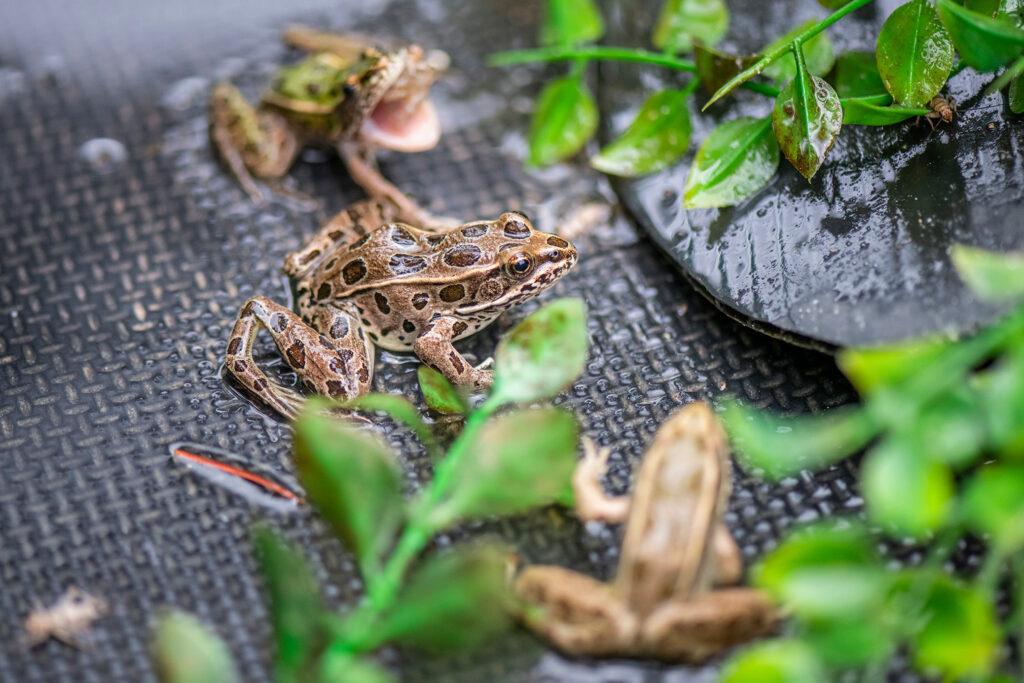Endangered northern leopard frogs have been growing at Northwest Trek Wildlife Park! We first received the frogs as eggs in early May from Washington Department of Fish and Wildlife (WDFW) officials. Since then, we’ve seen them evolve into tadpoles and froglets.
In their latest growth stage, experts at Northwest Trek came together to tag the frogs with a blue “dot” inserted into one foot. This method will allow scientists to spot them in the future and assess the success of this conservation project.
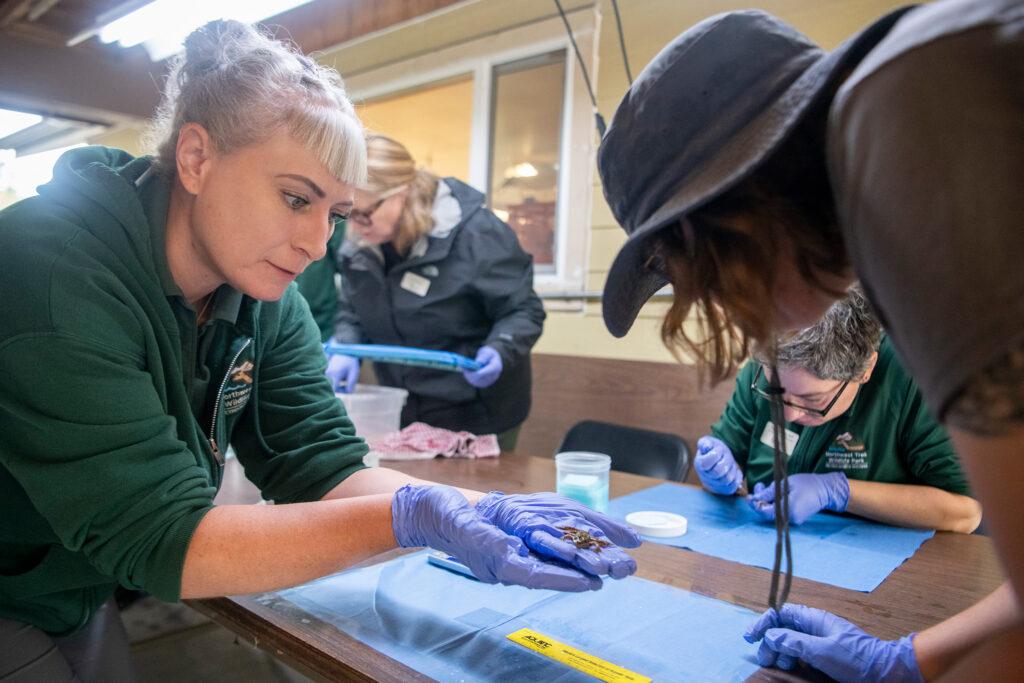
Northern leopard frogs are an endangered species. Once thriving in the Pacific Northwest, they are vanishing due to habitat loss, pollution, disease, and climate change. Now these frogs can only be found in the Potholes Reservoir in the Columbia Basin Wildlife Area.
In the tagging process, veterinarian staff first anesthetize the frogs. A tiny syringe filled with a fluorescent blue elastomer-tagging substance is inserted just above a tiny ankle. Then one bead of the elastomer is placed into the leg.
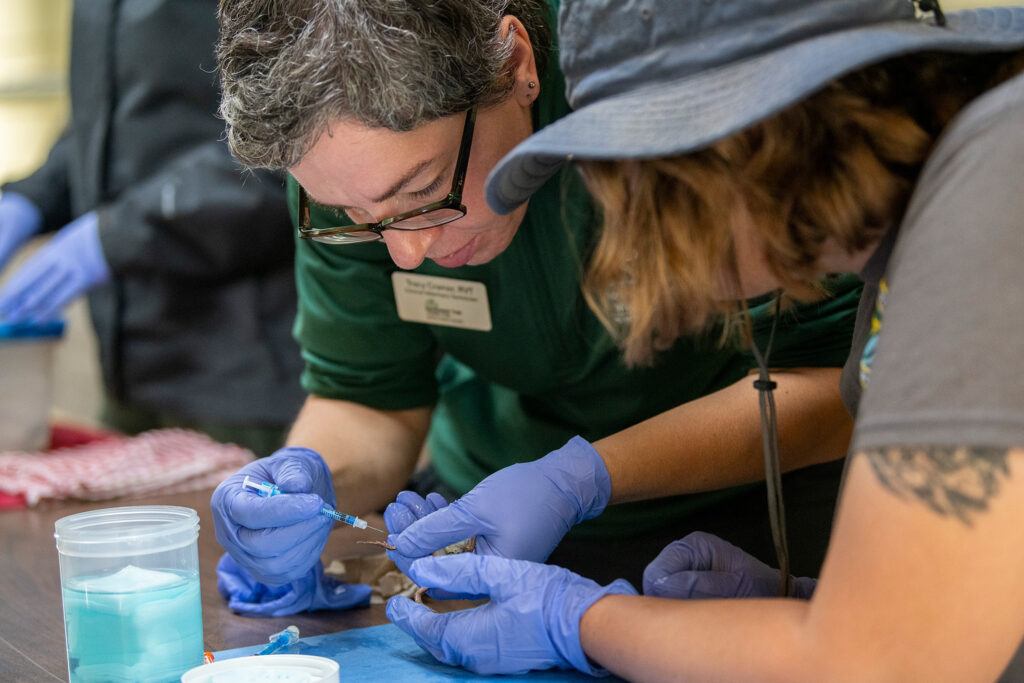
Afterward, keepers and staff weigh, measure, and transfer the frogs into a recovery tub. Here it is monitored for signs of recovery. It’s a delicate process involving leadership staff, veterinarians, technicians, and keepers. Having many players lets the process run smoothly and efficiently with careful eyes.
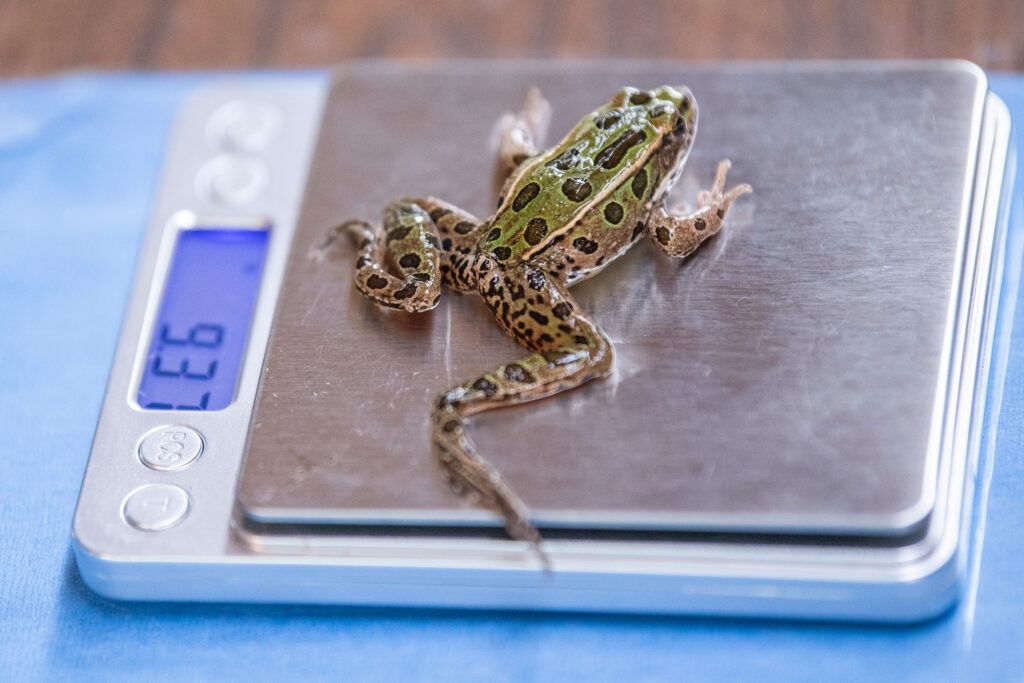
There are a total of 297 frogs that need to be tagged. Multiple sessions are required to tend to each frog before its release into the wild. Once in their habitat, they’ll face various challenges, but giving these frogs a headstart by raising them free of predators will provide them with a better chance of survival.
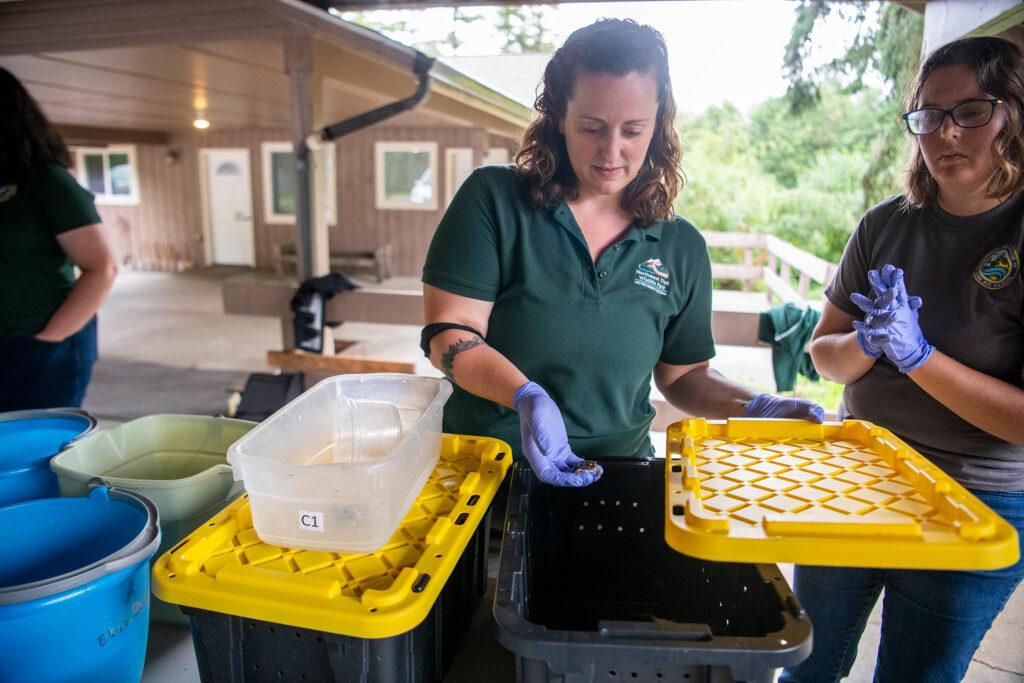
Northern leopard frogs are considered an indicator species. They tell us more about water quality and environmental health. If populations dwindle, as they have been, they tell us there are important things to address in their environment. Tagging northern leopard frogs offers us a unique window into their lives and how we can better recover this vanishing species.
